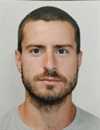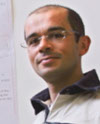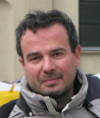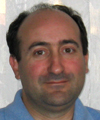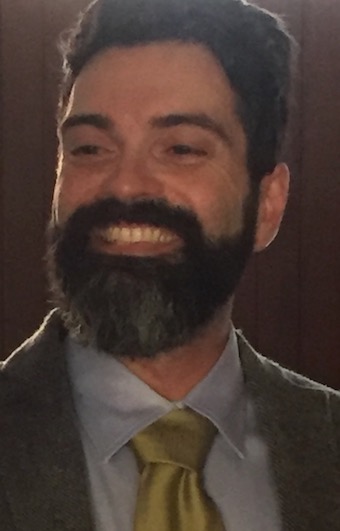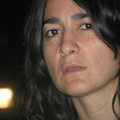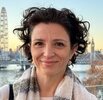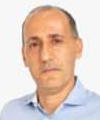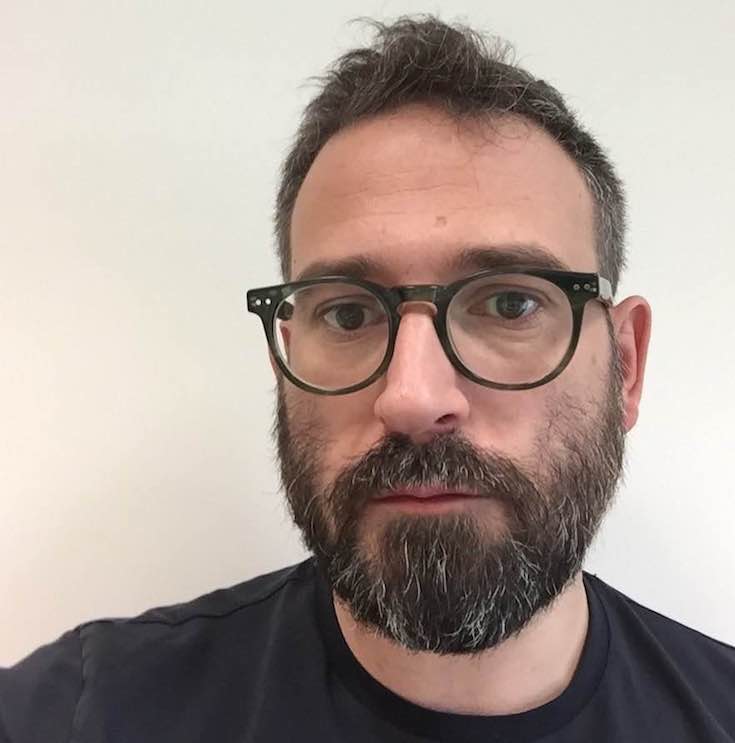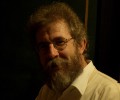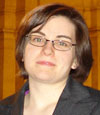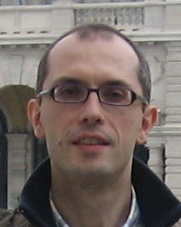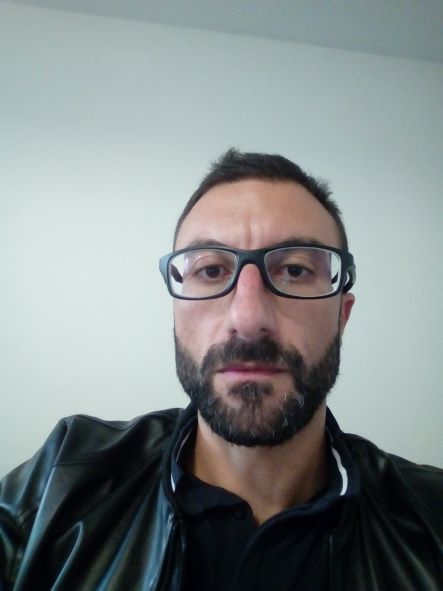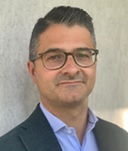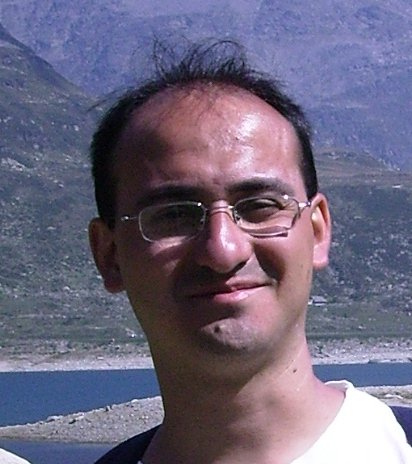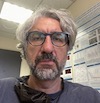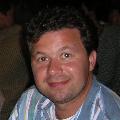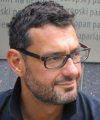Studying at the University of Verona
Here you can find information on the organisational aspects of the Programme, lecture timetables, learning activities and useful contact details for your time at the University, from enrolment to graduation.
Academic calendar
The academic calendar shows the deadlines and scheduled events that are relevant to students, teaching and technical-administrative staff of the University. Public holidays and University closures are also indicated. The academic year normally begins on 1 October each year and ends on 30 September of the following year.
Course calendar
The Academic Calendar sets out the degree programme lecture and exam timetables, as well as the relevant university closure dates..
| Period | From | To |
|---|---|---|
| Semester 1 | Oct 3, 2022 | Jan 27, 2023 |
| Semester 2 | Mar 6, 2023 | Jun 16, 2023 |
| Session | From | To |
|---|---|---|
| Sessione invernale d'esame | Jan 30, 2023 | Mar 3, 2023 |
| Sessione estiva d'esame | Jun 19, 2023 | Jul 31, 2023 |
| Sessione autunnale d'esame | Sep 4, 2023 | Sep 29, 2023 |
| Period | From | To |
|---|---|---|
| Ponte Festa di tutti i Santi | Oct 31, 2022 | Nov 1, 2022 |
| Ponte dell'Immacolata Concezione | Dec 8, 2022 | Dec 9, 2022 |
| Vacanze natalizie | Dec 23, 2022 | Jan 8, 2023 |
| Vacanze di Pasqua | Apr 7, 2023 | Apr 10, 2023 |
| Festa della Liberazione | Apr 24, 2023 | Apr 25, 2023 |
| Festa dei Lavoratori | May 1, 2023 | May 1, 2023 |
| Festa del Santo Patrono | May 21, 2023 | May 21, 2023 |
| Festa della Repubblica | Jun 2, 2023 | Jun 2, 2023 |
| Chiusura estiva | Aug 14, 2023 | Aug 19, 2023 |
Exam calendar
Exam dates and rounds are managed by the relevant Science and Engineering Teaching and Student Services Unit.
To view all the exam sessions available, please use the Exam dashboard on ESSE3.
If you forgot your login details or have problems logging in, please contact the relevant IT HelpDesk, or check the login details recovery web page.
Should you have any doubts or questions, please check the Enrollment FAQs
Academic staff
 elena.antelmi@univr.it
elena.antelmi@univr.it
 anna.barbieri@univr.it
anna.barbieri@univr.it
 mauro.bonafini@univr.it
mauro.bonafini@univr.it
 maurizio.boscaini@univr.it
maurizio.boscaini@univr.it
 mila.dallapreda@univr.it
mila.dallapreda@univr.it
 michele.ginesi@univr.it
michele.ginesi@univr.it
 giovannigerardo.muscolo@univr.it
giovannigerardo.muscolo@univr.it
 giandomenico.nollo@unitn.it
giandomenico.nollo@unitn.it
 andrea.roberti@univr.it
andrea.roberti@univr.it
 luca.selmi@unimore.it
luca.selmi@unimore.it
 claudio.tomazzoli@univr.it
claudio.tomazzoli@univr.it
 federico.tramarin@univr.it
federico.tramarin@univr.it
 ihsen.yengui@univr.it
ihsen.yengui@univr.it
 franco.zivcovich@univr.it
franco.zivcovich@univr.it
 simone.zuccher@univr.it
simone.zuccher@univr.it
Study Plan
The Study Plan includes all modules, teaching and learning activities that each student will need to undertake during their time at the University.
Please select your Study Plan based on your enrollment year.
1° Year
| Modules | Credits | TAF | SSD |
|---|
2° Year activated in the A.Y. 2023/2024
| Modules | Credits | TAF | SSD |
|---|
3° Year It will be activated in the A.Y. 2024/2025
| Modules | Credits | TAF | SSD |
|---|
1 module among the following| Modules | Credits | TAF | SSD |
|---|
| Modules | Credits | TAF | SSD |
|---|
| Modules | Credits | TAF | SSD |
|---|
1 module among the following| Modules | Credits | TAF | SSD |
|---|
Legend | Type of training activity (TTA)
TAF (Type of Educational Activity) All courses and activities are classified into different types of educational activities, indicated by a letter.
Introduction to system and signal analysis with laboratory (2023/2024)
Teaching code
4S009872
Academic staff
Coordinator
Credits
9
Language
Italian
Scientific Disciplinary Sector (SSD)
ING-INF/06 - ELECTRONIC AND INFORMATICS BIOENGINEERING
Period
Semester 2 dal Mar 4, 2024 al Jun 14, 2024.
Courses Single
Authorized
Learning objectives
Aim of the course is to give students the mathematical tools required for the analysis and modeling of linear, time-invariant (LTI) systems, and of the input/output signals to an LTI system. The model will allow students to study the main system properties and to address the general concepts of controller and filters to perform simple control actions on the dynamic system and filter operations on the input/output signals. The mathematical tools will be based on analysis methods in the time domain, as well as of the complex variables s, z and the frequency of the input/output signals. Analysis and synthesis will be carried out both for continuous and discrete time systems and signals. The theoretical concepts acquired during the course will be consolidated with exercise sessions addressing the solution of basic problems with analytical approach and with numerical simulations.
Prerequisites and basic notions
The course requires knowledge in Mathematical Analysis I and II, Physics I and II, Linear Algebra and Geometry, Fundamentals of Computer Science. Notions of Programming are also required (e.g., Java, C / C ++, Python).
Program
------------------------------------------
Program - THEORY
------------------------------------------
1. Introduction to the world of systems and signals.
2. Review of complex numbers, functions of complex variables, complex power series, convergence, Euler's formula.
3. Continuous time signals. Time domain: definitions, energy and power, fundamental signals.
4. Continuous-time systems: description using differential equations. Main properties: stability.
5. Linear time-invariant systems: impulse response, frequency response. Convolution. Bode diagrams.
6. The Laplace transform, the transfer function and the analysis of systems in s.
7. Frequency domain: Fourier series, Fourier transform.
8. Sampling theorem.
9. Discrete time signals. Study over time: definitions, fundamental signals.
10. Discrete time systems. Fundamental systems and definitions. Convolution. Filters: impulse response, forced response. ARMA model.
11. Frequency domain: Fourier transform and zeta transform. 12. Generalization to multidimensional signals.
-------------------------------------------
Program - LABORATORY
-------------------------------------------
During the laboratory sessions, some of the methodologies analyzed in the theory part will be deepened and problems will be solved, mainly using MATLAB. The software will be introduced and used to represent/analyze continuous and discrete signals and systems.
Bibliography
Didactic methods
The course will consist of lectures in the classroom, along with shared slides, notes and possible additional material that could be useful to deepen the topics, and practical exercises at the computer in the laboratory.
Learning assessment procedures
The exam consists of two parts, theory and laboratory. The theory (written) part consists of theoretical questions regarding the topics covered during the course together with some exercises, all aimed at evaluating both the level of learning and understanding of the theoretical foundations studied during the course and the ability to critically apply them for solving engineering problems. The laboratory test will be carried out at the computer and will allow to evaluate the ability to use MATLAB in the field of systems and signals, with coding of short scripts for solving specific questions relating to the topics covered.
Evaluation criteria
At the end of the course the student will have to demonstrate that:
1. they have fully understood the main topics inherent to systems and signals, both in continuous and discrete context, and of the related terminology;
2. have a critical view of the topics addressed during the course and of the results derived from the application of specific methods;
3. knowing how to apply the knowledge acquired to critically solve given engineering problems with varying degrees of complexity;
4. have achieved a good degree of competence in the use of IT tools for the analysis of systems and signals, especially the MATLAB software.
Both parts (theory and laboratory) will be carefully evaluated, thus giving equal importance to the correctness and effectiveness of the solutions adopted in the phase of solving concrete problems, as well as to the understanding of the theoretical concepts relating to systems and signals.
Concerning the composition of the final grade, this will be given by the sum of the evaluations of the theory part (2/3) and of the laboratory part (1/3). The exam is considered passed if in each of the two parts a score greater than or equal to 18 is achieved. Each evaluation remains valid for the entire current academic year.
Criteria for the composition of the final grade
The final grade will be given by the sum of the evaluations of the theory part (2/3) and the laboratory part (1/3). The exam is considered passed if in each of the two parts a score greater than or equal to 18 is achieved. Each evaluation remains valid for the entire current academic year
Exam language
Italiano / Italian
Type D and Type F activities
Le attività formative di tipologia D sono a scelta dello studente, quelle di tipologia F sono ulteriori conoscenze utili all’inserimento nel mondo del lavoro (tirocini, competenze trasversali, project works, ecc.). In base al Regolamento Didattico del Corso, alcune attività possono essere scelte e inserite autonomamente a libretto, altre devono essere approvate da apposita commissione per verificarne la coerenza con il piano di studio. Le attività formative di tipologia D o F possono essere ricoperte dalle seguenti attività.
1. Insegnamenti impartiti presso l'Università di Verona
Comprendono gli insegnamenti sotto riportati e/o nel Catalogo degli insegnamenti (che può essere filtrato anche per lingua di erogazione tramite la Ricerca avanzata).
Modalità di inserimento a libretto: se l'insegnamento è compreso tra quelli sottoelencati, lo studente può inserirlo autonomamente durante il periodo in cui il piano di studi è aperto; in caso contrario, lo studente deve fare richiesta alla Segreteria, inviando a carriere.scienze@ateneo.univr.it il modulo nel periodo indicato.
2. Attestato o equipollenza linguistica CLA
Oltre a quelle richieste dal piano di studi, per gli immatricolati A.A. 2021/2022 e A.A. 2022/2023 vengono riconosciute:
- Lingua inglese: vengono riconosciuti 3 CFU per ogni livello di competenza superiore a quello richiesto dal corso di studio (se non già riconosciuto nel ciclo di studi precedente).
- Altre lingue e italiano per stranieri: vengono riconosciuti 3 CFU per ogni livello di competenza a partire da A2 (se non già riconosciuto nel ciclo di studi precedente).
Tali cfu saranno riconosciuti, fino ad un massimo di 3 cfu complessivi, di tipologia D. Solo nel caso in cui la data di acquisizione della certificazione sia precedente al 27/10/2023 (data della delibera del Collegio didattico di Ingegneria dell'Informazione) potranno essere riconosciuti un massimo di 6 CFU, come precedentemente previsto. Ulteriori crediti a scelta per conoscenze linguistiche potranno essere riconosciuti solo se coerenti con il progetto formativo dello studente e se adeguatamente motivati.
Per gli immatricolati A.A. 2023/2024 i crediti per certificazioni linguistiche ulteriori a quelle previste dal piano didattico vengono riconosciuti come crediti sovrannumerari taf D.
Modalità di inserimento a libretto: richiedere l’attestato o l'equipollenza al CLA e inviarlo alla Segreteria Studenti - Carriere per l’inserimento dell’esame in carriera, tramite mail: carriere.scienze@ateneo.univr.it
3. Competenze trasversali
Scopri i percorsi formativi promossi dal TALC - Teaching and learning center dell'Ateneo, destinati agli studenti regolarmente iscritti all'anno accademico di erogazione del corso https://talc.univr.it/it/competenze-trasversali
Modalità di inserimento a libretto: non è previsto l'inserimento dell'insegnamento nel piano di studi. Solo in seguito all'ottenimento dell'Open Badge verranno automaticamente convalidati i CFU a libretto. La registrazione dei CFU in carriera non è istantanea, ma ci saranno da attendere dei tempi tecnici.
4. CONTAMINATION LAB
Il Contamination Lab Verona (CLab Verona) è un percorso esperienziale con moduli dedicati all'innovazione e alla cultura d'impresa che offre la possibilità di lavorare in team con studenti e studentesse di tutti i corsi di studio per risolvere sfide lanciate da aziende ed enti. Il percorso permette di ricevere 6 CFU in ambito D o F. Scopri le sfide: https://www.univr.it/clabverona
ATTENZIONE: Per essere ammessi a sostenere una qualsiasi attività didattica, incluse quelle a scelta, è necessario essere iscritti all'anno di corso in cui essa viene offerta. Si raccomanda, pertanto, ai laureandi delle sessioni di dicembre e aprile di NON svolgere attività extracurriculari del nuovo anno accademico, cui loro non risultano iscritti, essendo tali sessioni di laurea con validità riferita all'anno accademico precedente. Quindi, per attività svolte in un anno accademico cui non si è iscritti, non si potrà dar luogo a riconoscimento di CFU.
5. Periodo di stage/tirocinio
Oltre ai CFU previsti dal piano di studi (verificare attentamente quanto indicato sul Regolamento Didattico): qui il VADEMECUM DELLE ATTIVITÀ DI TIROCINIO (indirizzo email della Commissione tirocini: tirocini-ismp@ateneo.univr.it ); qui la relativa pagina informativa (con link a moodle) qui informazioni su come attivarlo.
Insegnamenti e altre attività che si possono inserire autonomamente a libretto
| years | Modules | TAF | Teacher | |
|---|---|---|---|---|
| 1° | Seminari di sistemi medicali (I anno) | F |
Luigi Rovati
|
|
| 2° | Seminari di sistemi medicali (II anno/1) | F |
Luigi Rovati
|
|
| 2° | Seminari di sistemi medicali (II anno/2) | F |
Luigi Rovati
|
|
| 2° 3° | Matlab-Simulink programming | D |
Bogdan Mihai Maris
(Coordinator)
|
|
| 2° 3° | Rapid prototyping on Arduino | D |
Franco Fummi
(Coordinator)
|
|
| years | Modules | TAF | Teacher | |
|---|---|---|---|---|
| 1° | Seminari di sistemi medicali (I anno) | F |
Luigi Rovati
|
|
| 2° | Chirurgia robotica | D |
Gianluigi Califano
|
|
| 2° | Movimento e salute | D |
Federico Schena
|
|
| 2° | Seminari di sistemi medicali (II anno/1) | F |
Luigi Rovati
|
|
| 2° 3° | Introduction to 3D printing | D |
Franco Fummi
(Coordinator)
|
|
| 2° 3° | LaTeX Language | D |
Enrico Gregorio
(Coordinator)
|
|
| 2° 3° | Python programming language | D |
Carlo Combi
(Coordinator)
|
|
| 2° 3° | HW components design on FPGA | D |
Franco Fummi
(Coordinator)
|
|
| 2° 3° | Protection of intangible assets (SW and invention)between industrial law and copyright | D |
Roberto Giacobazzi
(Coordinator)
|
|
| years | Modules | TAF | Teacher |
|---|---|---|---|
| 1° | Subject requirements: mathematics | D |
Franco Zivcovich
|
Career prospects
Module/Programme news
News for students
There you will find information, resources and services useful during your time at the University (Student’s exam record, your study plan on ESSE3, Distance Learning courses, university email account, office forms, administrative procedures, etc.). You can log into MyUnivr with your GIA login details: only in this way will you be able to receive notification of all the notices from your teachers and your secretariat via email and soon also via the Univr app.
Attendance
The inter-university nature of the course of study lies in the cooperation of the three universities in the provision of faculty. Therefore, teaching delivery takes place at the administrative and teaching site in Verona and not in the partner universities. This means that it is not possible to attend this bachelor's degree program in the University of Trento or Modena-Reggio Emilia; however, it is possible to use the study spaces of the partner universities, thanks to the agreement between them.
As stated in the Didactic Regulations for A.Y. 2022/2023, course attendance is not mandatory.
Career management
Student login and resources
Erasmus+ and other experiences abroad
Graduation
List of theses and work experience proposals
| theses proposals | Research area |
|---|---|
| THESIS_1: Sensors and Actuators for Applications in Micro-Robotics and Robotic Surgery | Various topics |
| THESIS_2: Force Feedback and Haptics in the Da Vinci Robot: study, analysis, and future perspectives | Various topics |
| THESIS_3: Cable-Driven Systems in the Da Vinci Robotic Tools: study, analysis and optimization | Various topics |

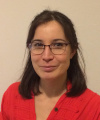
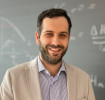
 0461 283551
0461 283551

